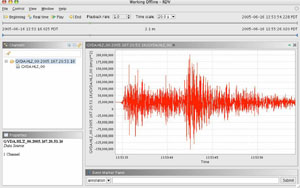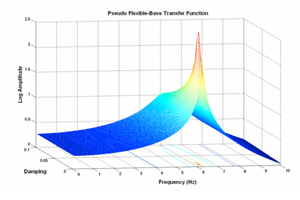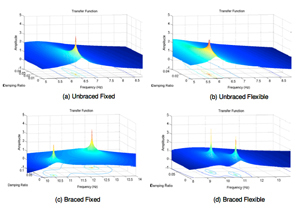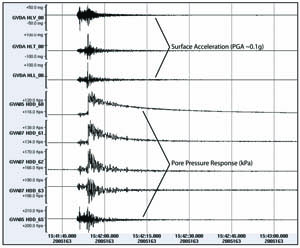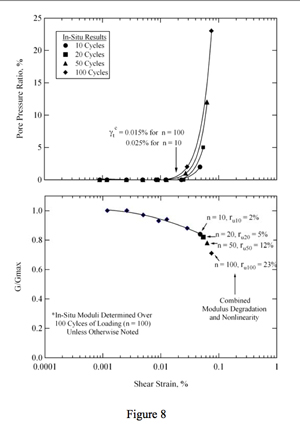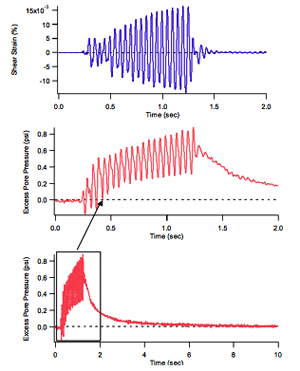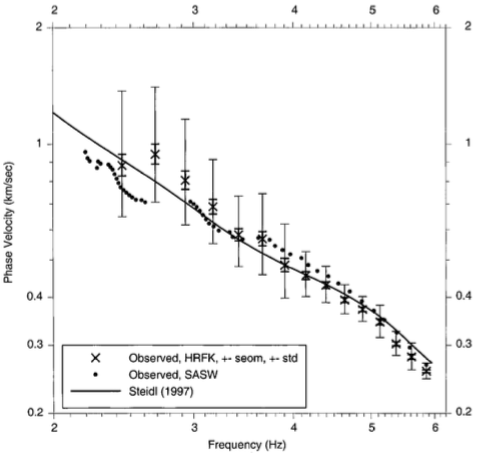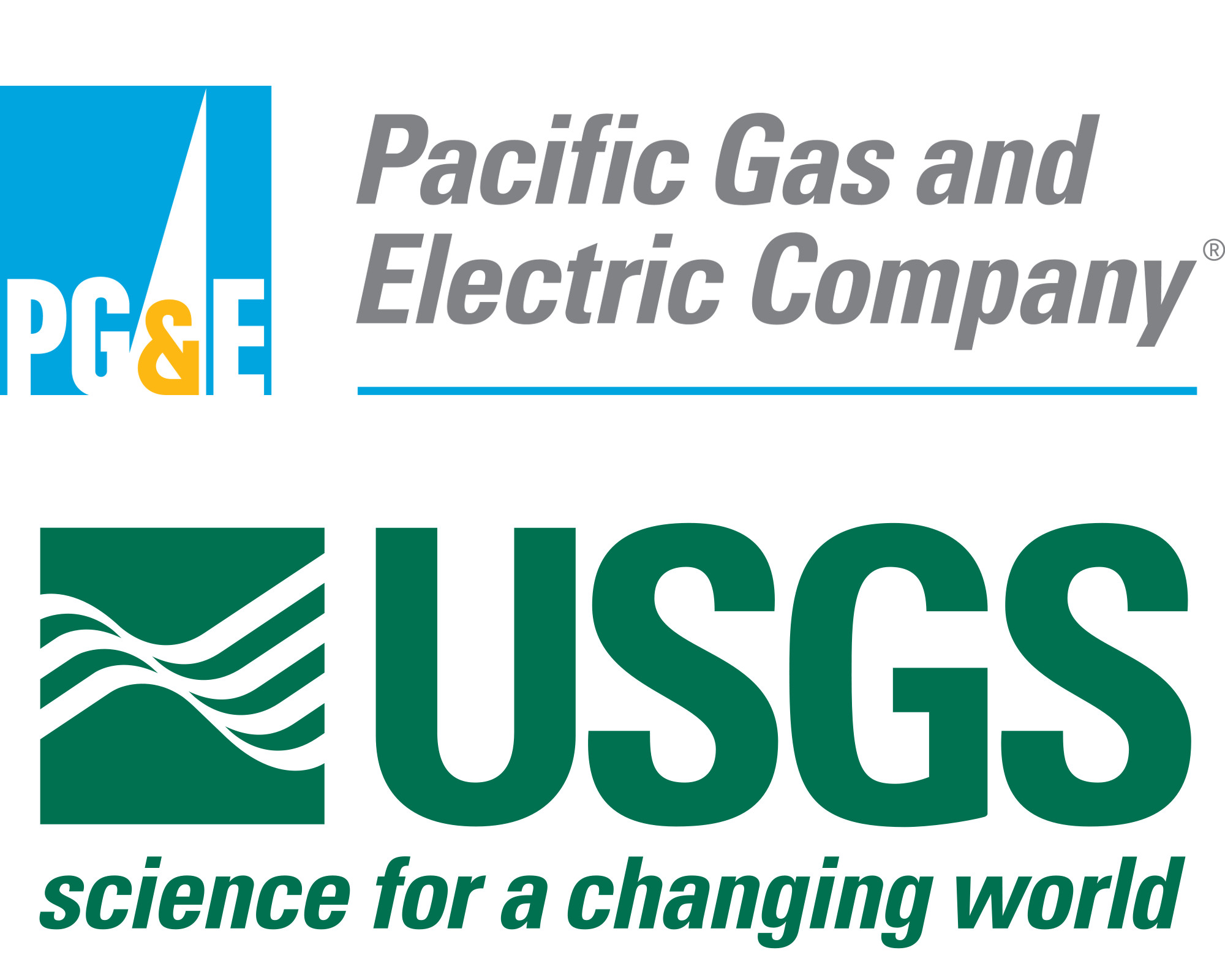Steidl, J. H., R. L. Nigbor, T. L. Youd (2008)
Proceedings of the 14th World Conference on Earthquake Engineering, October 12-17, 2008 Beijing
The RDV tool displays a M4.9 event downloaded using the map-based search tool.These tools allow remote participants in researchexperiments the ability to watch the experiments as they happen.
Tileylioglu, S., Nigbor, R., Stewart, J. (2008)
Transfer function surface (pseudo flexible-base case, no bracing).
Tileylioglu, S. (2008)
A dissertation submitted in partial satisfaction of the requirements for the degree of Doctor of Philosophy in Civil Engineering,University of California, Los Angeles.
Transfer function surfaces.
Steidl, J. H., Seale, S. H. (2010)
To be presented to the Fifth International Conference on Recent Advances in Geotechnical Earthquake Engineering and Soil Dynamicsand Symposium in Honor of Professor I.M. Idriss.
Pore pressure and accelerations recorded over 90 seconds at GVDA from the M=5.1 Anza Event.
Cox, B.R., Stokoe II, K.H., Rathje, E.M. (2009)
ASTM Geotechnical Testing Journal, V. 32, No. 1, pp. 11-21.
Example of pore pressure generation curves and nonlinear soil shear modulus values obtained from in-situ dynamic liquefactiontests conducted at the Wildlife Liquefaction Array (WLA).
Cox, Brady Ray (2006)
Dissertation presented to the Faculty of the Graduate School of The University of Texas.
Shearing strain and excess pore water pressure time histories obtained from a first-generation in-situ liquefaction test (fromChang, 2002).
Hsi-Ping Liu, David M. Boore, William B. Joyner, David H. Oppenheimer, Richard E. Warrick, Wenbo Zhang, John C. Hamilton, and Leo T. Brown
Shear-wave velocities (VS) are widely used for earthquake ground- motion site characterization. VS data are now largely obtained using borehole meth- ods. Drilling holes, however, is expensive. Nonintrusive surface methods are inex- pensive for obtaining VS information, but not many comparisons with direct borehole measurements have been published. Because different assumptions are used in data interpretation of each surface method and public safety is involved in site character- ization for engineering structures, it is important to validate the surface methods by additional comparisons with borehole measurements. We compare results obtained from a particular surface method (array measurement of surface waves associated with microtremor) with results obtained from borehole methods. Using a 10-element nested-triangular array of 100-m aperture, we measured surface-wave phase veloci- ties at two California sites, Garner Valley near Hemet and Hollister Municipal Air- port.
Phase velocities obtained from high-resolution-frequency-wavenumber (HRFK) spectrum-analysis method.
